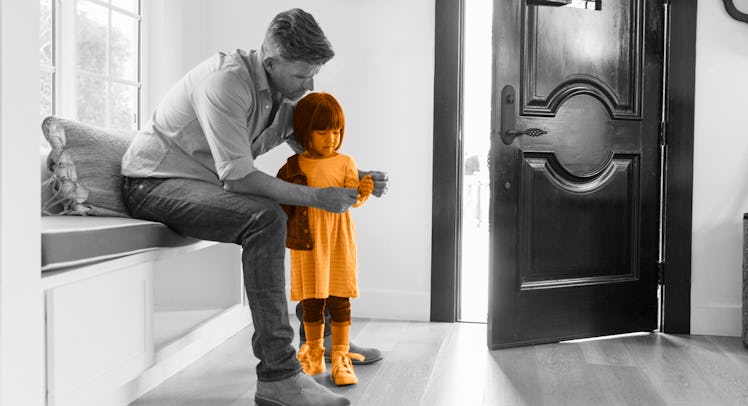How to Leave Home Quickly (and Not Forget the Kids)
The transition from house to outing can be a pain point for parents, but professional nannies may have found the secret to getting kids out the door quickly and easily.

Outings for kids can be a ton of fun for the whole family. Unfortunately getting everyone out the door can sour the experience before the adventure even begins. It never fails that parents will ask kids to put their shoes on multiple times, attempt to track down bags and coats, argue about what items can be taken and which must be left and finally try to find the goddamn keys. But it turns out that tackling the challenge with the forethought and prep of a professional nanny might make more logistical sense.
“In my experience, it’s always best to stick to a routine as best as you can,” explains professional nanny and Editor-in-Chief of Nanny Magazine Amanda Dunyak. “Children don’t have a concept of time, so alerting them to transitions by giving them a visual or auditory cue, such as a timer, has been known to help immensely.”
Dunyak is particularly fond of using picture schedules that help children visually understand the flow of activities. She notes that kids have a tendency to be a bit less distracted if they understand what comes next in the process. That’s why Dunyak chooses picture schedules that have a first/then structure. As in “first we put on our shoes, then we get in our car seats.” It might seem a bit simplistic and burdensome, but kids need simple, and Dunyak is clear that it’s not half as burdensome as the chaos that normally surrounds leaving the house.
“It may feel more time consuming,” she says. “But giving the children an aid to help them understand the transition to the next activity, like leaving the house, calms their little minds and will be beneficial to the whole family in the long run.”
When the process is nailed down to become a routine for leaving the house, so much the better. That said, the “leaving the house” routine does not have to be materialistic. It can be fun or include songs, which can help lighten the mood and relieve some of the stress.
“Sing a song for putting shoes on or getting strapped into the car seat,” Dunyak suggests. “Put stickers in shoes to decipher left from right, which in turn can make it a fun activity for the child. The more you practice this in advance the more the child will come to expect the routine and be more willing to comply.”
How to Improve the Logistics of Getting Kids Out the Door
- Prepare kids with a schedule so that they know what’s coming next in the process of leaving.
- Make sure the exit area is prepared with all materials needed for the outing and that it is free of fun distractions.
- Manage your own expectations and understand that children will naturally be slower than you want them to be.
- Add songs and games to make leaving less of a chore.
- Try to keep a positive attitude to keep kids from becoming difficult or grumpy.
More than simply preparing children for what’s to come, parents can also try to manage and prep their environment so it acts as a more efficient launch pad. Dunyak suggests emptying the exit area of any and all fun toys and objects that prove a last minute distraction to children. It also helps to have all items needed for leaving the house packed and at the exit before a countdown to leaving begins (this would naturally include those pesky car keys).
More than managing their physical space, however, parents need to manage their headspace. Getting angry and frustrated about children dragging their feet only makes things worse. “As hard as it is, remaining calm and patient is key,” Dunyak says. “the more frazzled the adult becomes, the more agitated the child. Breathe and allow for enough time for the child to understand the transition that is happening and to prepare for it.”
Dunyak notes that much of the nannies toolbag is devoted to a positive attitude. Grumpy adults don’t necessarily engender happy cooperative kids. That’s something she thinks parents can learn from nannies, particularly as it pertains to the frustration of getting them out the door.
“As a Nanny, I can say that making activities fun or turning a simple, everyday activity into a tiny game can go a long way in making transitions to out of the house go a lot smoother,” Dunyak says. “The calmer you are, the more likely the children will remain calm. The more you smile and remain upbeat, the more likely the children will do the same.”
That way the good times can start well before the outing and just keep rolling right out the door.
This article was originally published on